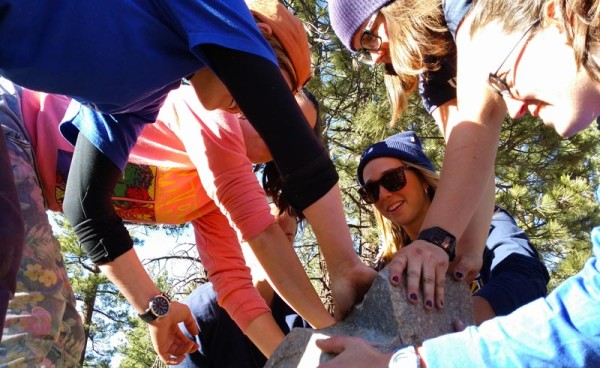
If you were driving on Highway 38 on a Friday afternoon and wondered what 25 adults, all wearing the same shirt, were doing with dirt, logs, rocks, and tools, you were likely not the only one.
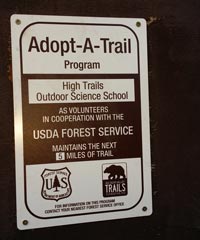 Allow me to introduce the High Trails staff on this Friday afternoon, performing their seasonal trail work on the Wildhorse Trail. Half of the staff went up to do trail work one Friday, and the next Friday the remainder of the staff kept the project going. High Trails Outdoor Science School is written on the Adopt-A-Trail sign at the trailhead, and after all, we want to keep up the good name.
Allow me to introduce the High Trails staff on this Friday afternoon, performing their seasonal trail work on the Wildhorse Trail. Half of the staff went up to do trail work one Friday, and the next Friday the remainder of the staff kept the project going. High Trails Outdoor Science School is written on the Adopt-A-Trail sign at the trailhead, and after all, we want to keep up the good name.
But it’s more than trying to create a good name for High Trails (or at least I believe it to be).
 Staff are encouraged to be involved in the surrounding community – through volunteer opportunities, events, or otherwise. As a business, High Trails has voluntarily taken over the maintenance of Wildhorse Trail. This is a mutually beneficial partnership, where High Trails becomes involved in the community by providing stewardship to a part of the national forest; the community benefits from a better built trail, less erosion and harm to the watershed, and increased user-friendliness.
Staff are encouraged to be involved in the surrounding community – through volunteer opportunities, events, or otherwise. As a business, High Trails has voluntarily taken over the maintenance of Wildhorse Trail. This is a mutually beneficial partnership, where High Trails becomes involved in the community by providing stewardship to a part of the national forest; the community benefits from a better built trail, less erosion and harm to the watershed, and increased user-friendliness.
Upon arrival, our Director, Driz (who also works with the Big Bear Valley Trails Foundation), quickly yet thoroughly went over what each tool in his truck was used for – Pulaski, Mcleod, rake, pickaxe, pickmattock, rock bar – and had everyone grab a tool. Whether you were a seasoned veteran or new to trail work and could not identify the difference between a pickaxe and a McLeod, that was ok!
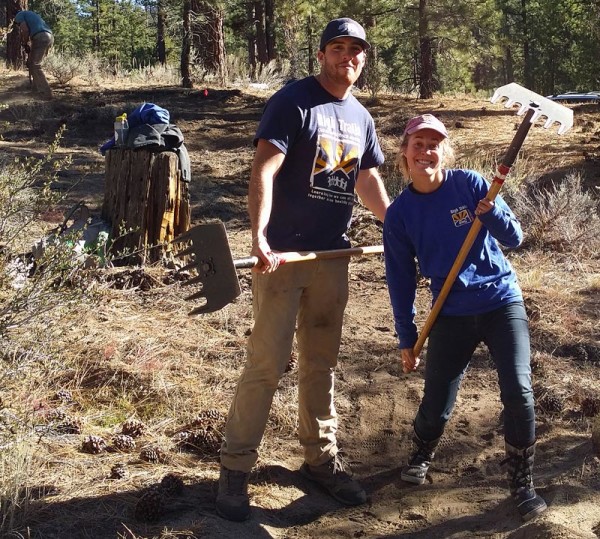 Groups efficiently got to work on their assigned task – slash this road, move these logs, reroute this section of trail, make that part of the trail more obvious, move this sign. Every group was a mix of experience, talent, and humor. Some people put in their headphones, sang along to their music silently, and completed their tasks. Others talked and laughed, caught up after the week or made plans for the weekend while carrying logs, digging ditches, and moving rocks.
Groups efficiently got to work on their assigned task – slash this road, move these logs, reroute this section of trail, make that part of the trail more obvious, move this sign. Every group was a mix of experience, talent, and humor. Some people put in their headphones, sang along to their music silently, and completed their tasks. Others talked and laughed, caught up after the week or made plans for the weekend while carrying logs, digging ditches, and moving rocks.
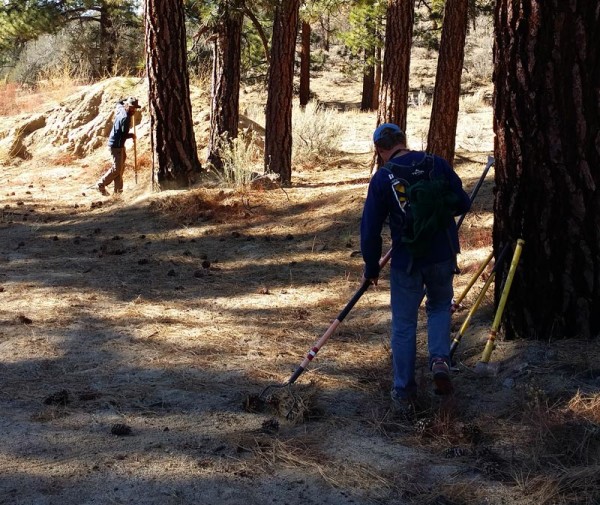 For individual staff members, the benefit of stewardship can be great. Staff are given ownership of different projects along the trail. Whether working individually or as a group, they take on a new sense of responsibility – to their project as well as the bigger picture of making the trail better. When staff are doing valuable work in the community, it gives them a sense of accomplishment and involvement.
For individual staff members, the benefit of stewardship can be great. Staff are given ownership of different projects along the trail. Whether working individually or as a group, they take on a new sense of responsibility – to their project as well as the bigger picture of making the trail better. When staff are doing valuable work in the community, it gives them a sense of accomplishment and involvement.
This stewardship can translate to the workplace, where they feel a part of something bigger than High Trails.
It’s also a time to have fun, joke around and learn more about the people that we work with, all while helping out the community (both our High Trails community and the surrounding one that we live in).
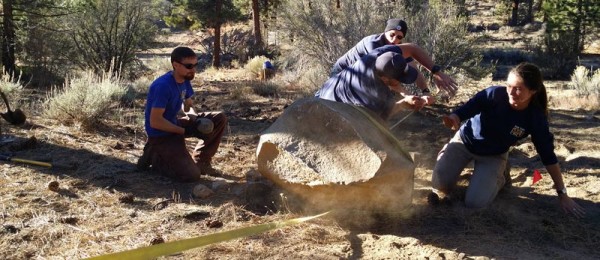 One of my favorite moments was the moving of a large rock about 100 feet to help block off a road we did not want used anymore. It started out as a group of five, trying to wedge things under the rock and push it. No luck. Then a strap became involved, where someone could pull while others pushed. Still, no luck. Finally, a long rope was tied to the strap, so 12-15 people could all help pull.
One of my favorite moments was the moving of a large rock about 100 feet to help block off a road we did not want used anymore. It started out as a group of five, trying to wedge things under the rock and push it. No luck. Then a strap became involved, where someone could pull while others pushed. Still, no luck. Finally, a long rope was tied to the strap, so 12-15 people could all help pull.
And there it was – we didn’t need luck, we needed everyone’s help!
Everyone helping to pull the rope was joking and laughing, yet still encouraging each other and getting the job done. That rock now proudly blocks the old, erosive pullout that no one should use.
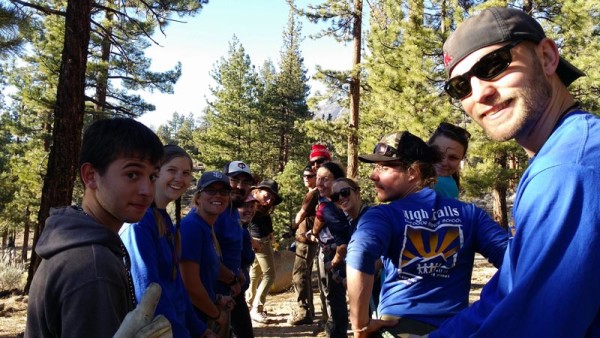 After we had completed as much as 25 people can in an afternoon of work (which turns out to be a lot), we all walked along the section of trail we had just transformed. We admired the work others had done that we had not even known was happening, since we were all doing our own projects.
After we had completed as much as 25 people can in an afternoon of work (which turns out to be a lot), we all walked along the section of trail we had just transformed. We admired the work others had done that we had not even known was happening, since we were all doing our own projects.
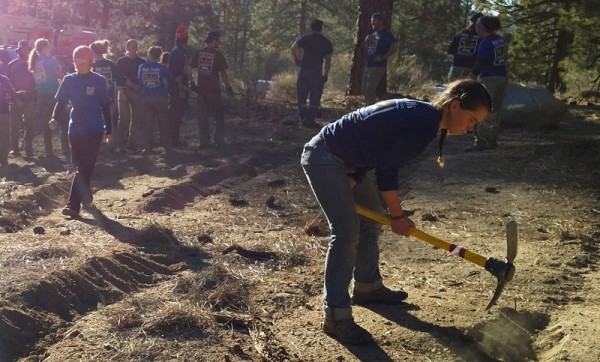 The confusing parking lot and trailhead for Wildhorse had been given a facelift. Areas that were overused and compacted by humans and vehicles had suddenly been covered with pine needles, water bars, small moguls, and logs. This discourages runoff, promotes percolation of water into the soil, and prevents users from trampling that area.
The confusing parking lot and trailhead for Wildhorse had been given a facelift. Areas that were overused and compacted by humans and vehicles had suddenly been covered with pine needles, water bars, small moguls, and logs. This discourages runoff, promotes percolation of water into the soil, and prevents users from trampling that area.
Confusing user-created trail spurs were now returned to their natural state, demarcated with rocks and logs. This encouraged users to stay on one trail and minimize their impact. The trail from the parking lot was made clear and easy to follow. And that large rock that we had all worked together to move stood proudly along the road. This rock, along with other items, blocks off an old parking area that we returned to a more natural state.
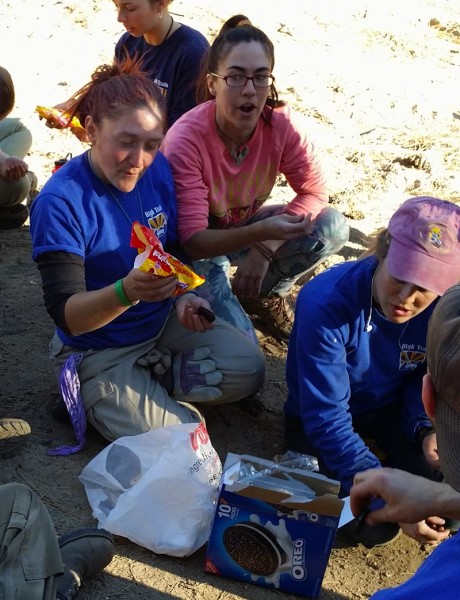 After walking up the trail even farther, to see the other work to be done in a few weeks by the other half of the staff, we sat down for a brief meeting. One staff member made a comment that stuck with me afterwards. She hadn’t been excited for trail work beforehand, but had no idea you could have that much fun doing this kind of work. When you can disguise work as fun, you have succeeded.
After walking up the trail even farther, to see the other work to be done in a few weeks by the other half of the staff, we sat down for a brief meeting. One staff member made a comment that stuck with me afterwards. She hadn’t been excited for trail work beforehand, but had no idea you could have that much fun doing this kind of work. When you can disguise work as fun, you have succeeded.
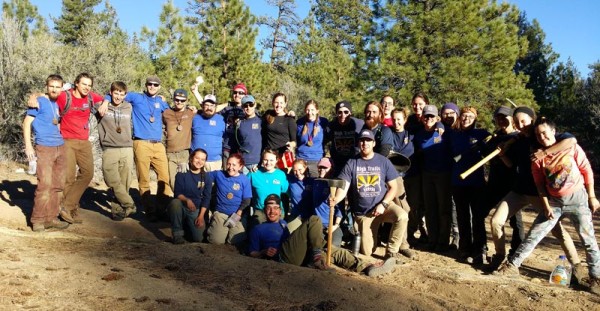 At High Trails Outdoor Science School, we literally force our instructors to write about elementary outdoor education, teaching outside, learning outside, our dirty classroom (the forest…gosh), environmental science, outdoor science, and all other tree hugging student and kid loving things that keep us engaged, passionate, driven, loving our job, digging our life, and spreading the word to anyone whose attention we can hold for long enough to actually make it through reading this entire sentence. Whew…. www.dirtyclassroom.com
At High Trails Outdoor Science School, we literally force our instructors to write about elementary outdoor education, teaching outside, learning outside, our dirty classroom (the forest…gosh), environmental science, outdoor science, and all other tree hugging student and kid loving things that keep us engaged, passionate, driven, loving our job, digging our life, and spreading the word to anyone whose attention we can hold for long enough to actually make it through reading this entire sentence. Whew…. www.dirtyclassroom.com
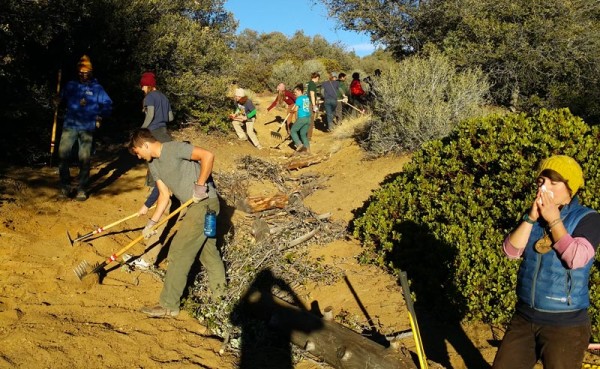

Comments are closed.